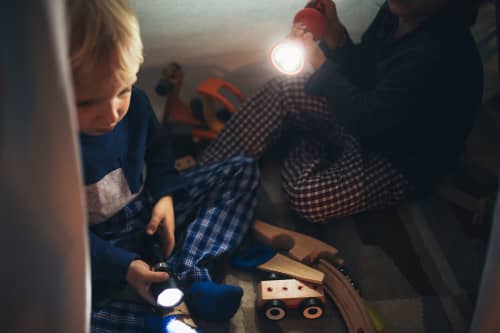Why You Need An Emergency Kit And How To Build One

What Is An Emergency Kit?
Should a natural disaster impact your community, you may need to survive on your own for an unforeseeable amount of time. Having a collection of food, water, and general supplies (medical and otherwise) that can last for at least three days—the average time it takes for first responders to reach victims—can help you survive until you have access to local or federal emergency services. Making a plan and getting an emergency kit are two preparedness actions you can take now before it’s too late.
How To Build Your Own Emergency Kit
- Start with one or two plastic bins or a duffel bag that fits bulk items.
- Print a checklist to shop from, and include any additional items required by anyone in your family with different needs like an infant, pet, or senior.
- Store boxed food in airtight plastic bags or metal containers.
- Make a list of everything in your emergency kit, noting any expiration dates so you can replace things when they expire—instead of having to rummage through your entire kit.
- Keep a copy of your list in a plastic bag on top of your items, and keep other copies in your home. Also include copies of insurance policies, medical information, and other important documents in the plastic document bag.
- Choose a month every year where you evaluate your family’s needs and update your kit per any changes.
Where To Buy An Emergency Kit
Buying a pre-assembled disaster kit can save time (The American Red Cross has a good kit). At companies like Emergency Kits, you can find specific kits for your home, school, work, or vehicle. There is also a myriad of emergency kits available on Amazon where you can shop top-ranked and read reviews. There are even options for the more style-conscious among us from brands like Preppi—assuming you don’t mind spending a bit more for them.
Some pre-assembled kits don’t have water and food items, so you’ll want to add in those. You can customize a basic kit by adding specific items like a homemade first aid kit, spare keys, or region-specific necessities, like batteries and a NOAA Weather Radio for flood-prone areas.
Where You Should Store Your Home Emergency Kit
Home kits: These should be kept in a designated cool, dry place that everyone in the household knows about. It should be easily accessible and not blocked or hidden in case you have to evacuate your home quickly. A location close to an exit on your way to your car or the street is ideal.
Work kits: Be prepared to stay at your workstation—whether that’s at a desk in an office setting or at a school—for at least 24 hours following a disaster, unless otherwise instructed. Work kits should be stored in an enclosed backpack, and include the basics—water, food, medicines, and comfortable walking shoes.
Car kits: Having a car emergency kit is a good idea if you’re ever stranded, or in the case of roadside emergencies. An emergency escape tool for cutting through seatbelts or breaking windows could save a life. Be mindful of extreme temperatures and storing your kit in your car, as this can cause some items to spoil, or expire earlier.
How Long An Emergency Kit Should Last
The minimum amount of time your kit should prepare you for is three days. Most pre-assembled kits have a 5-year shelf life. You’ll want to double-check any first aid, food items, batteries, and medications every six months or so, and swap out any expired items. Keep in mind some items might degrade before their expiration date. The last thing you want is to find damaged supplies when you really need them.
Be Prepared For Your Particular Location
Did you know that floods are the most common natural disaster in the US? If the recent California wildfires and North Carolina hurricanes are obvious signs, different parts of the country will experience different types of disasters. Earthquakes are more likely to occur on the West Coast. Florida, Kansas, Oklahoma, and Texas are tornado-prone. Cater your kit to your locale. Know what disasters and hazards affect your area, and where to go if you need to evacuate. Get emergency alerts to be notified first.
Take a deep breath. Are you ready to get your emergency preparedness kit? Urge your friends and family to get theirs, too. We’re all in this together, and everybody wants to feel more prepared to handle what’s out of their control.